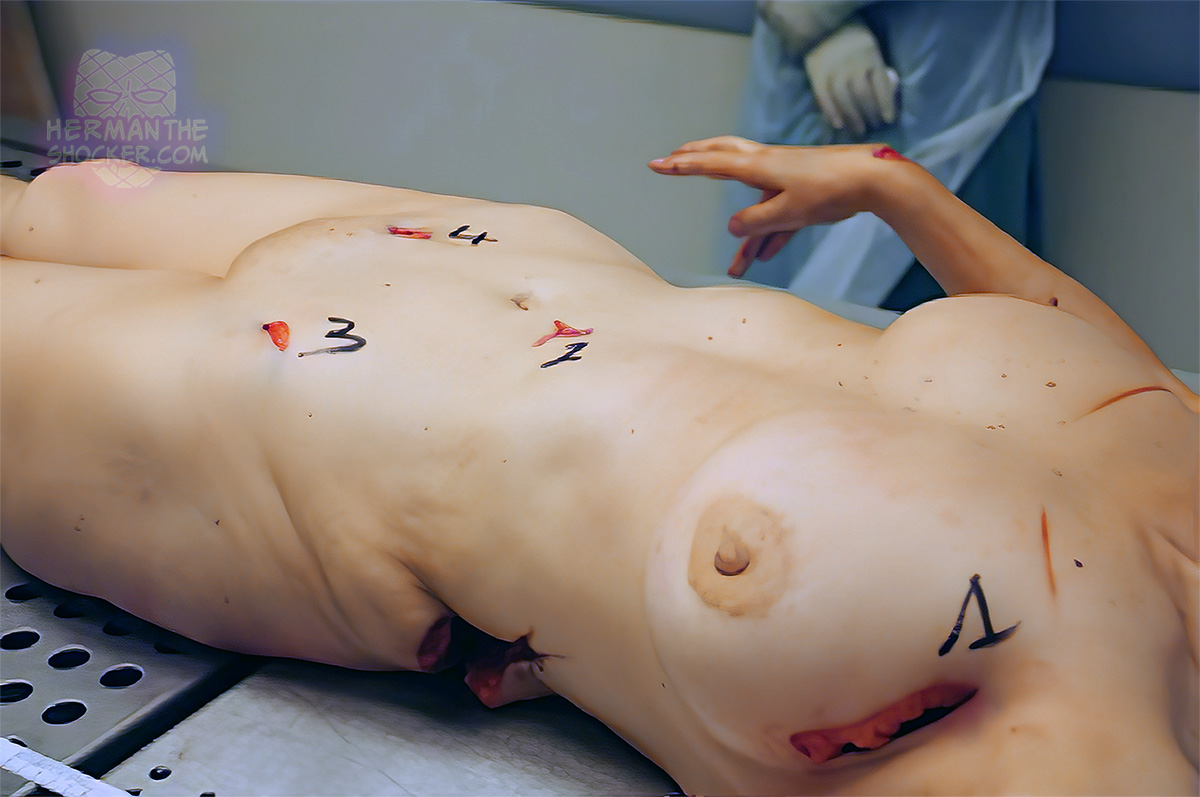France. A 59-year-old woman was assaulted by her son with a Japanese sword (katana) with a total length of 95 cm (37.4″), a blade length of 60 cm (23.6″), and a blade height near the guard of 3 cm (1.2″), and at the end of 2 cm (0.8″). The aggressor was suffering from schizophrenia and had stopped his treatment.
External examination showed forty-two sharp force injuries of the body. Nine of the wounds were stab wounds. Three stab wounds were on the anterior of the torso and four were on the posterior torso (two thoracic, one lumbar, one gluteal). Across the upper back, long superficial incisions were noticed. These kinds of injuries could be a helpful clue to the nature of the weapon as well. Two wounds were located on the lateral aspect of the left arm and thigh. The longest wound (24 cm, 9.4″) was a wound of the left arm, with injuries of the musculature and humerus. The superior cutaneous margin had an irregular-abraded, edge and the inferior margin had an incised edge. There was a cortical fracture with a displaced bone chip and exposure of the bone marrow of the left mid humerus. Incised wounds were noted on the posterior surface of both upper extremities and the palms of hands, and contusions on the ventral surfaces of the forearms. There was traumatic disarticulation of the left thumb associated with an incised wound.
Internal examination of the thorax showed stab wounds of both lungs, aorta, and large veins (pulmonary veins, inferior vena cava) with left pneumothorax, left hemothorax (20 mL), and right hemothorax (9 mL). The abdomen and pelvis had stab injuries of the uterus and transection of the left fallopian tube with slight hemoperitoneum (30 mL). The depth of penetration of the implement was estimated to be 25 cm (9.8″). Furthermore, wounds in the upper lateral quadrant of the left breast and in the posterior side of the thorax had a thoracic track without an exit wound. Also, the wound situated below the navel had a pelvic track without an exit wound.
Homicide by stab wound is common worldwide. However, the use of unusual edged weapons is rarely reported in the forensic literature. Homicides with katana swords are rare. A katana is a single-edged sword worn by the Japanese samurai. It is characterized by a single curved edged blade. Katanas can cause incised and stab wounds. Forensic analysis of these injuries with a description of wound edges, associated cutaneous injuries, directionality, and estimated depth of penetration allow the forensic expert to evaluate the type of weapon used. Unusual weapons can pose a challenge for the forensic expert. The correlation of weapon blade and stab wound dimensions can be altered by several factors like skin elasticity, angle of the weapon relative to the skin surface, postmortem variation, or degree of applied strength. In this case, the forensic expert has to answer the question of the cause of death. The forensic pathologist concluded that the death was due to blood loss by internal and external hemorrhage, secondary to the multiple wounds caused by a sharp-edged instrument repeatedly throughout the body.
Latest posts














